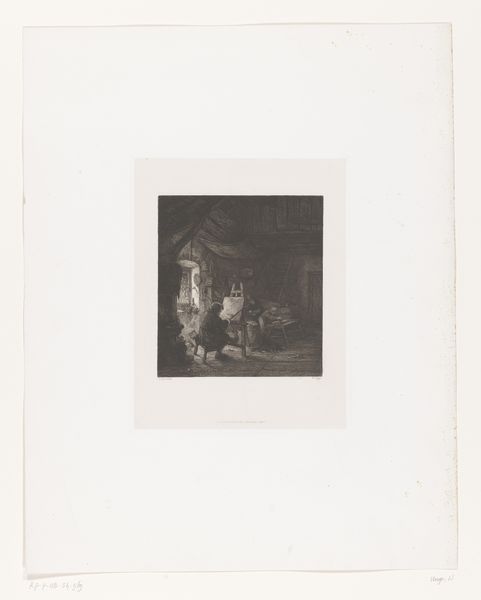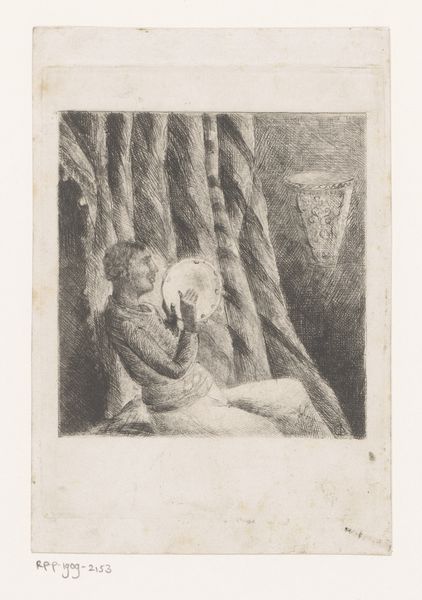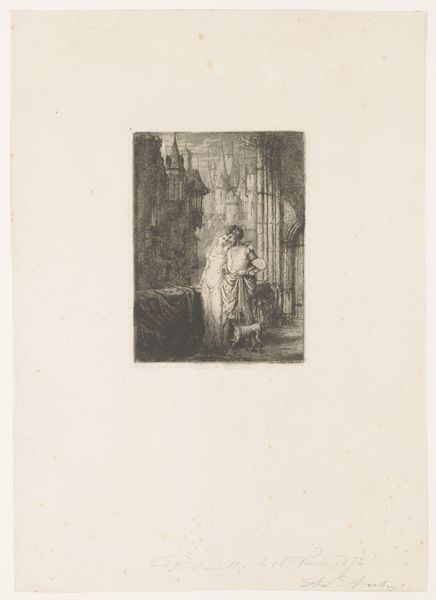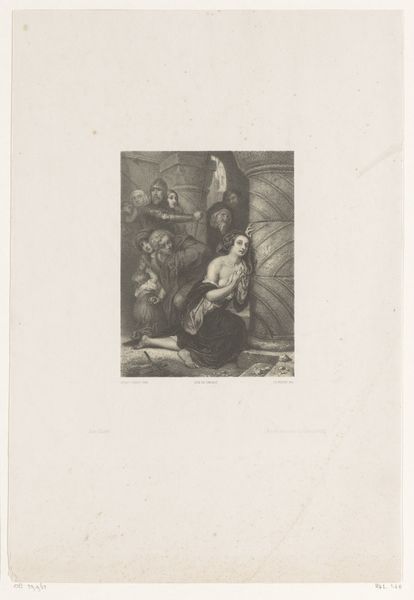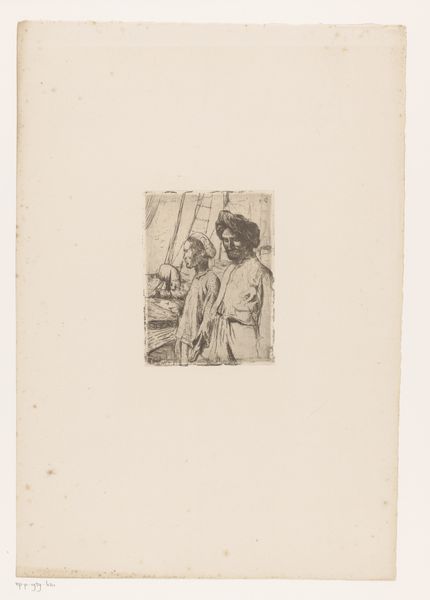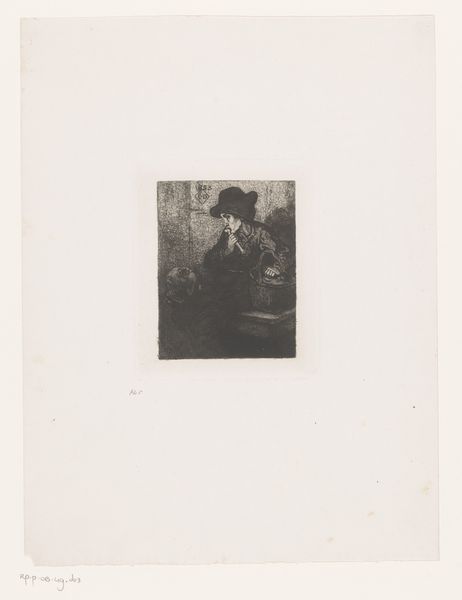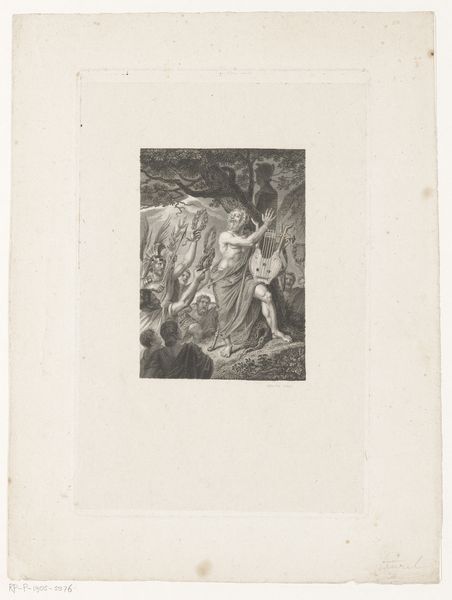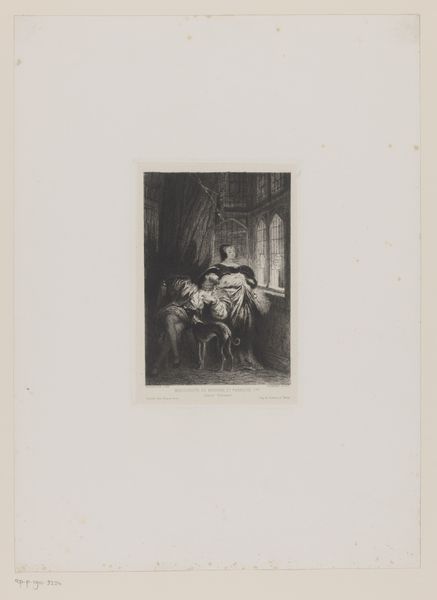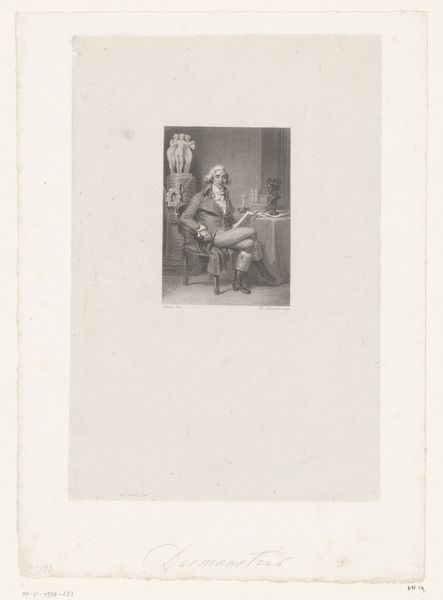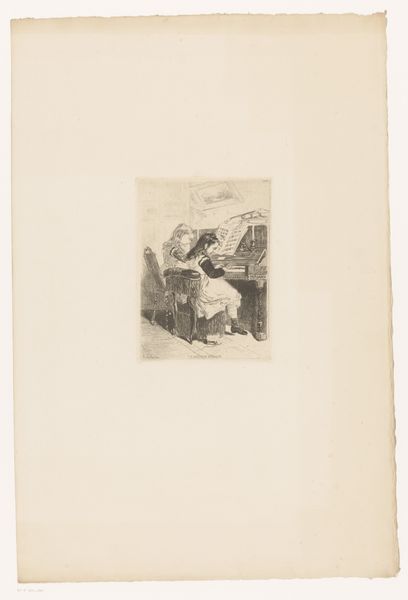
print, etching
#
portrait
#
16_19th-century
# print
#
etching
#
genre-painting
#
realism
Dimensions: height 160 mm, width 120 mm
Copyright: Rijks Museum: Open Domain
Curator: There's a kind of faded intimacy to this image... It's subdued. The figure almost seems swallowed by the setting. Editor: You're right. What we see here is an etching titled "Man met tamboerijn", created around 1875 by Vicomte Arthur-Jean Le Bailly d'Inghuem. Curator: The tambourine… In many contexts, it's linked with ecstatic religious or Dionysian rites, even carnival. I see percussion as being connected to freedom and catharsis. Yet here, it feels almost mournful. Editor: An interesting read. The realism in the figure contrasts sharply with those suggestive stripes of fabric and decorative vase looming over his shoulder. It places the artwork firmly in the genre painting tradition. Does the choice of "realistic" expression and material usage have significance in your interpretation? Curator: Absolutely. The man appears trapped in a carefully staged tableau of class, a display almost funereal. This creates psychological space. Look how he languidly plays that tambourine. What's being repressed there, you think? Editor: Or perhaps displayed with studied, deliberate meaning? There is evidence the museum and gallery system started in this era. Perhaps we're seeing an early critique on the relationship between artistic creation and institutional reception. A tamborine becomes not about joy, but a performative symbol of it? Curator: I am always trying to bring the social context to art. Is our focus really only for this art and where it is now in museums? We can expand into our interpretation what art truly is or what it shows... I do wonder. I suppose that's a worthy thought to end on, about this piece. Editor: And maybe that's a good moment for us to conclude our look at this artwork, with a lot more room for thought on that time, those eras, as a lot more comes to surface in artistic history.
Comments
No comments
Be the first to comment and join the conversation on the ultimate creative platform.
